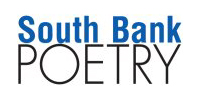6 Great Love Poems Written by Women
There is no defining moment when the feminist poetry came to life. The 1960s brought political and cultural watershed, but women wrote about their experiences many years before that.
- How do I love thee by Elizabeth Barret Browning
Elizabeth Barret Browning, associated with the Romantic movement, dealt with political and social themes in her work, like unification of Italy, or the oppression of women in her verse novel Aurora. During her courtship with Robert Browning, Barret Browning wrote highly acclaimed Sonnets from the Portuguese. These poems are her greatest achievement, with Sonnet XLIII considered the finest of them all:
How do I love thee? Let me count the ways.
I love thee to the depth and breadth and height
My soul can reach, when feeling out of sight
For the ends of being and ideal grace.
I love thee to the level of every day’s
Most quiet need, by sun and candle-light.
I love thee freely, as men strive for right;
I love thee purely, as they turn from praise.
I love thee with the passion put to use
In my old griefs, and with my childhood’s faith.
I love thee with a love I seemed to lose
With my lost saints. I love thee with the breath,
Smiles, tears, of all my life; and, if God choose,
I shall but love thee better after death.
This is a traditional Petrarchan sonnet, with rhyme scheme ABBA ABBA CDCDCD, written in iambic pentameter. To increase the overall rhythm and rhyme of the sonnet, Barret Browning also uses alliteration, like in the line eight ‘purely’ and ‘praise’. Barret Browning also uses evocative imagery, appealing to our senses, like in lines six and seven: ‘I love thee to the level of every day’s / Most quiet need, by sun and candle-light.’ As the poem progresses the language becomes more figurative, and includes religious motifs.
2- I Think I Should Have Loved You Presently (Sonnet IX) by Edna St Vincent Millay
Edna St Vincent Millay – winner of the Pulitzer Prize in 1923, Millay was one of the most skilful writers of sonnets in the 20th century; in her work she combines modernist attitudes with traditional forms. In her 1931 collection of love sonnets Fatal Interview Millay challenges commonplace definitions of female sexuality. She uses traditional forms of a Shakespearean/Elizabethan sonnet sequence but expresses a woman’s point of view. Reviewers called the sequence great, and praised both the remarkable technique of the sonnets and their meticulously accurate diction.
I Think I Should Have Loved You Presently (Sonnet IX)
I think I should have loved you presently,
And given in earnest words I flung in jest;
And lifted honest eyes for you to see,
And caught your hand against my cheek and breast;
And all my pretty follies flung aside
That won you to me, and beneath your gaze,
Naked of reticence and shorn of pride,
Spread like a chart my little wicked ways.
I, that had been to you, had you remained,
But one more waking from a recurrent dream,
Cherish no less the certain stakes I gained,
And walk your memory’s halls, austere, supreme,
A ghost in marble of a girl you knew
Who would have loved you in a day or two.
This traditional in form Shakespearean sonnet with rhymes ABABCDCDEFEFGG, is an expression of impermanence of romantic love that is only ‘a recurrent dream’. Millay uses repetition at the beginning of lines two to five, increasing the rhythm of the poem. The poet uses simple imagery to express female sexuality. It’s left to interpretation, whether the poem expresses regret, or is itself ‘a folly’, like romantic love.
3- Songs to Joannes by Mina Loy
Mina Loy – poet and painter, a member of the generation that launched the modernist revolution in the poetry in United States. The love lyric at that time was considered the appropriate realm for women poets, but Loy used poetic traditions to critique romantic ideology. She took on topics considered scandalous for poetry in general, and for poetry by a woman in particular, like childbirth or lovemaking.
In her Songs to Joannes also called Love Songs, Loy shows her attention to sensual detail and challenges the traditional fairy like notions of romance.
Songs to Joannes
I.
Spawn of fantasies
Sifting the appraisable
Pig Cupid his rosy snout
Rooting erotic garbage
“Once upon a time”
Pulls a weed white star-topped
Among wild oats sown in mucous membrane
I would an eye in a Bengal light
Eternity in a sky-rocket
Constellations in an ocean
Whose rivers run no fresher
Than a trickle of saliva
These are suspect places
I must live in my lantern
Trimming subliminal flicker
Virginal to the bellows
Of experience
Colored glass.
This is the first of 34 poem sequences, written in free verse. Loy just like Millay plays with the tradition of romantic poetry, but to do that she doesn’t use traditional poetic forms; she was influenced by Futurism and Surrealism, and avant-garde poetics. The imagery Loy uses in the poem is striking: ‘pig Cupid … rooting erotic garbage’ or ‘rivers run no fresher than a trickle of saliva’ – instead of romantic transcendence, we are grounded in the corporal and the animal. ‘Pig Cupid’ and ‘Once Upon a Time’ are allusions to fairy tales, but Loy revises and remixes love poem formally, and this is visible in her line breaks, apertures, and fissures.
4- After Love by Maxine Kumin
Maxine Kumin – an American poet. In her work she uses spare, direct language, and careful attention to detail to explore love, loss, and the natural world of her rural New England.
In one of her best known poems, After Love, Kumin captures a brief moment of tranquillity in the life of a married couple.
After Love
Afterward, the compromise.
Bodies resume their boundaries.
These legs, for instance, mine.
Your arms take you back in.
Spoons of our fingers, lips
admit their ownership.
The bedding yawns, a door
blows aimlessly ajar
and overhead, a plane
singsongs coming down.
Nothing is changed, except
there was a moment when
the wolf, the mongering wolf
who stands outside the self
lay lightly down, and slept.
It’s a personal take on what happens after love ends, either at the end of love making or, some would say, at the end of a relationship. The physical descriptions of surroundings, ‘the bedding that yawns, a door/blows aimlessly ajar’ increase a feeling of anti-climax. The poem is written in seven two-line stanzas, diptychs, with the eight that ends the poem with one line. Frequent enjambments increase feeling of dissonance, detachment, of the narrator. The imagery is simple: bodies that take themselves back, bedroom surroundings, and the wolf that was for a short moment (of lovemaking?) asleep.
5- Love Letter by Sylvia Plath
Sylvia Plath – a prolific poet, author of five poetry collections, out of which only one was published during her lifetime. Plath’s life, her marriage to Ted Hughes and her death by suicide in 1963 still remain a source of controversy.
With her poems, Plath advanced the genre of confessional poetry. Her work is marked by the intense coupling of its violent or disturbed imagery and its playful use of alliteration and rhyme.
Love Letter
Not easy to state the change you made.
If I’m alive now, then I was dead,
Though, like a stone, unbothered by it,
Staying put according to habit.
You didn’t just tow me an inch, no
Nor leave me to set my small bald eye
Skyward again, without hope, of course,
Of apprehending blueness, or stars.
That wasn’t it. I slept, say: a snake
Masked among black rocks as a black rock
In the white hiatus of winter
Like my neighbors, taking no pleasure
In the million perfectly-chisled
Cheeks alighting each moment to melt
My cheeks of basalt. They turned to tears,
Angels weeping over dull natures,
But didn’t convince me. Those tears froze.
Each dead head had a visor of ice.
And I slept on like a bent finger.
The first thing I was was sheer air
And the locked drops rising in dew
Limpid as spirits. Many stones lay
Dense and expressionless round about.
I didn’t know what to make of it.
I shone, mice-scaled, and unfolded
To pour myself out like a fluid
Among bird feet and the stems of plants.
I wasn’t fooled. I knew you at once.
Tree and stone glittered, without shadows.
My finger-length grew lucent as glass.
I started to bud like a March twig:
An arm and a leg, and arm, a leg.
From stone to cloud, so I ascended.
Now I resemble a sort of god
Floating through the air in my soul-shift
Pure as a pane of ice. It’s a gift.
This poem, written in four stanzas, 8, 10, 10 and 8 lines long, creates a strong sense of intimacy. It opens with an idyllic image of blue sky, but second stanza brings frightening dream, a fantasy, ‘a snake / Masked among black rocks as a black rock.’ The narrator travels through a disturbing landscape of ‘white hiatus of winter’, with ‘angels weeping’ – ‘Those tears froze. / Each dead head had a visor of ice’ – to return to the moment of present reality and to awaken, thanks to love. The narrator, ‘a sort of god’, was reborn.
6- The Floating Poem by Adrienne Rich
Adrienne Rich – her poetry and essays spanned seven decades and her writing tackled issues of identity, sexuality and politics. Rich’s Twenty One Love Poems, originally published in 1976 and were influenced by Millay’s Fatal Interview.
The Floating Poem (from Twenty One Love Poems)
Whatever happens with us, your body
will haunt mine—tender, delicate
your lovemaking, like the half-curled frond
of the fiddlehead fern in forests
just washed by sun. Your traveled, generous thighs
between which my whole face has come and come—
the innocence and wisdom of the place my tongue has found there—
the live, insatiate dance of your nipples in my mouth—
your touch on me, firm, protective, searching
me out, your strong tongue and slender fingers
reaching where I had been waiting years for you
in my rose-wet cave—whatever happens, this is.
This poems succeeds in being both tender and sensual. Rich depicts female power and produces erotic narrative, which resists masculinist conceptions of literary history.
The Floating Poem is written in free verse with frequent enjambments. By addressing the lover directly, Rich created a strong feeling of intimacy. The poem captures the moment of connection, the narrator and their lover move towards each other’s bodies. Here, touch, contact, mutuality, the presence of two lovers to one another – these replace the male gaze.
If you would like to discuss love poetry why not come along to our class on it. Click here to find out more.





